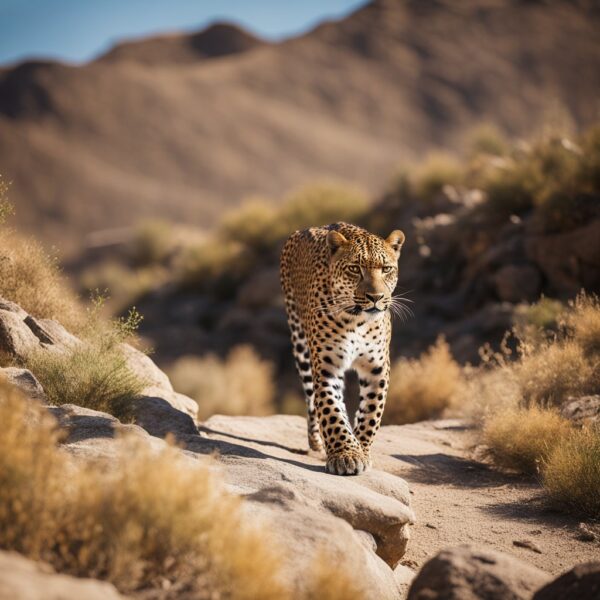
Iranian wildCats: Diversity and Conservation
Iran is a bastion for an array of wild cats, both large and small, that roam its diverse landscapes. From the arid central plateau to the lush northern forests, these feline species, including the Asiatic cheetah, Persian leopard, caracal, and sand cat, have adapted to the wide range of climates and ecosystems found within the country. The Asiatic cheetah, also known as the Iranian cheetah, is a critically endangered species, with its remaining population residing only in Iran, highlighting the country’s global conservation significance. Similarly, the Persian leopard, a symbol of agility and grace, faces the threat of extinction, yet continues to be an intrinsic part of Iran’s natural heritage.
The smaller cats, though less known, are no less important in the ecological fabric of Iran. Species like the Pallas’s cat, jungle cat, and the wildcat possess unique characteristics and play vital roles in their respective habitats. Despite the enchantment these cats bring to Iran’s wildlife tapestry, they face numerous challenges. Habitat degradation, human-wildlife conflict, and illegal hunting are pressing issues that threaten their survival. Conservation efforts are underway to safeguard these species, yet the struggles are amplified by socioeconomic and political complexities.
Key Takeaways
- Iran hosts several wild cat species, including the critically endangered Asiatic cheetah and Persian leopard.
- Small wild cats in Iran also contribute significantly to the country’s biodiversity and face conservation challenges.
- Habitats in Iran ranging from deserts to forests are vital for the survival of these feline species.
The Evolution and Origins of Iranian Wildcats
The Iranian plateau hosts a diverse array of wild cats, with their evolutionary origins sparking considerable scientific interest. Among these, Felis silvestris, commonly known as the European wildcat, has a notable presence. Iran’s geographical position acts as a crossroad for the distribution ranges of both the European wildcat and the African wildcat, Felis lybica.
Molecular studies, utilizing mitochondrial DNA markers such as the cytochrome b gene, have shed light on the phylogenetic relationships of these species. Comparative genetic analysis reveals that Iranian wildcats exhibit significant genetic structuring. This points towards a complex evolutionary history influenced by geographical separations and environmental changes over millennia.
Small wild cats in Iran have adapted to a variety of habitats, from forested regions to arid landscapes. These adaptations are crucial for survival and are reflected in their genetic makeup. The Iranian wildcat populations demonstrate a condition of demographic equilibrium, indicating a relatively stable existence through historical timelines.
Evolutionary history suggests that the Iranian wildcats’ gene pool is an amalgamation of lineages, with distinctions between the wildcat species increasingly difficult to delineate due to gene flow. Nonetheless, International conservation focus is imperative to prevent genetic dilution from interbreeding with domestic cats and to mitigate threats from habitat loss and hunting.
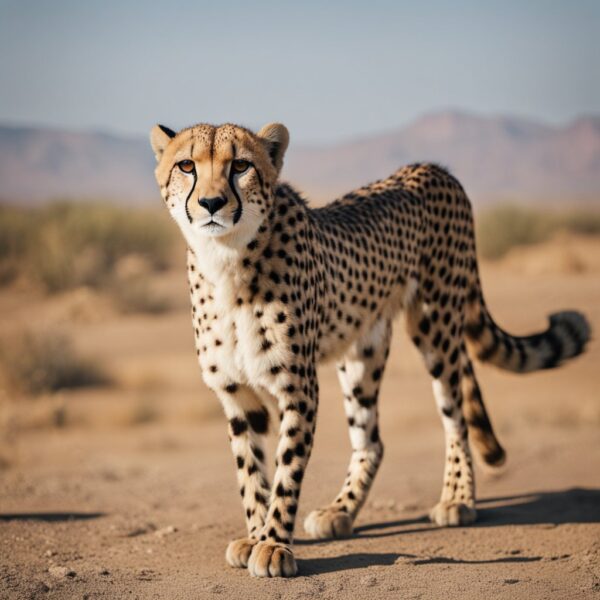
Overview of Cat Species in Iran
Iran is home to a variety of cat species ranging from the critically endangered Asiatic cheetah to the lesser-known Pallas’s cat, each occupying distinct habitats and facing varied conservation challenges.
Asiatic Cheetah: A Symbol of Pride and Peril
The Asiatic cheetah (Acinonyx jubatus venaticus), once widespread across the dry plains of Iran, is now struggling to survive, with its population dwindling to the brink of extinction. Characterized by its slender frame and swift speeds, this big cat is critically endangered, primarily due to habitat fragmentation and poaching.
The Elusive Persian Leopard
Roaming from the northern forests to the southern mountains of Iran, the Persian leopard (Panthera pardus saxicolor) is an adaptable species. Despite facing threats from illegal hunting and human encroachment, efforts are being made to stabilize their status, although they remain endangered.
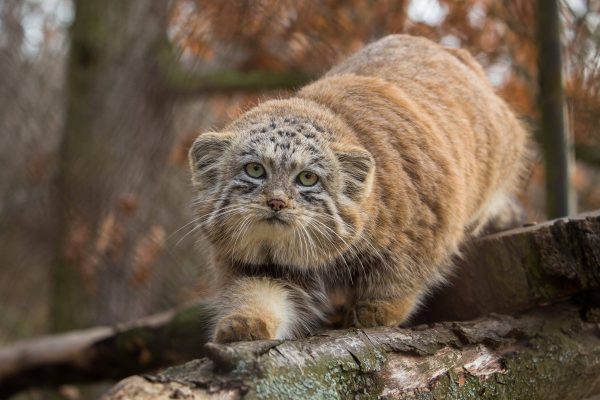
Pallas’s Cat: The Unique Feline of the Highlands
Distinguished by its compact body, short legs, and long, dense fur, the Pallas’s cat (Otocolobus manul) has a distinct presence in Iran’s highland steppes. Adapted to cold climates, this small wild cat’s appearance is defined by a stocky build and prominent, rounded ears.
The Desert Dweller: The Sand Cat
Inhabiting the arid deserts of Iran, the sand cat (Felis margarita) is built for life in harsh conditions with features such as thick fur on the soles of its feet. This small wildcat survives in these extreme environments, where water is scarce, and temperatures can vary greatly.
Other Notable Wildcats of Iran
Iran’s fauna also includes other smaller wildcats such as the Eurasian lynx (Lynx lynx), the jungle cat (Felis chaus), and the caracal (Caracal caracal). These species are distributed across different regions, from dense woodlands near the Caspian Sea to the deserts and scrublands of central Iran and the Middle East.
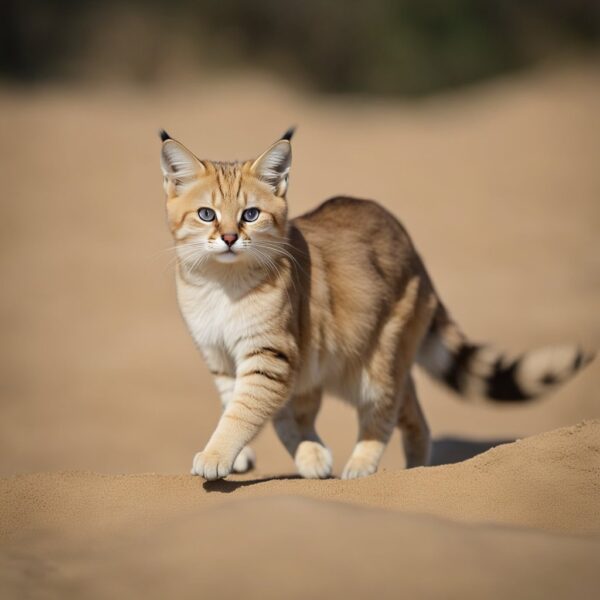
Conservation Challenges and Efforts
The conservation of wild cats in Iran faces several serious hurdles, ranging from their endangered status to the loss of habitats and complex breeding programs necessary for their survival.
Endangered Status and Conservation Measures
Wild cats in Iran, namely the Persian leopard and the Asiatic cheetah, are categorized as Critically Endangered on the IUCN Red List. Conservation efforts have intensified in light of fewer than 1,000 mature leopards and a worryingly low number of cheetahs in the wild. To counteract threats like poaching and habitat destruction, Iran has adopted various conservation measures. These include legal protections, anti-poaching units, and educational outreach to promote coexistence between humans and wild cats.
- Key Threats:
- Poaching for fur and body parts
- Trophy hunting
- Human-wildlife conflict
- Conservation Measures:
- Legal protections for species
- Anti-poaching patrols
- Environmental education programs
Habitat Loss and Human-Wildlife Conflict
Persian leopards and other wild cats suffer due to habitat degradation, which not only diminishes their natural space but also leads to increased encounters with humans. Conflict arises as wild cats prey on livestock, prompting retaliatory killings. Expansion of urban areas and infrastructure like roads further fragment these sensitive habitats, complicating the wild cats’ migratory and hunting patterns.
- Habitat Challenges:
- Deforestation
- Urbanization
- Road accidents
- Human-Wildlife Interactions:
- Livestock predation
- Retaliatory killings
- Encroachment on habitats
Genetics and Breeding Programs
Genetic diversity is paramount for the survival of threatened species. Iran has embarked on captive and semicaptive breeding programs, especially for the cheetah, with limited success. A small group of captive cheetahs in Iran has produced offspring, though with high mortality rates. These programs are essential in preserving the genetic pool and providing a potential lifeline for these species.
- Breeding Programs:
- Captive breeding of Asiatic cheetahs
- Monitoring genetic diversity
- Challenges in Breeding:
- Low genetic variability
- High cub mortality
- Limited success in breeding initiatives
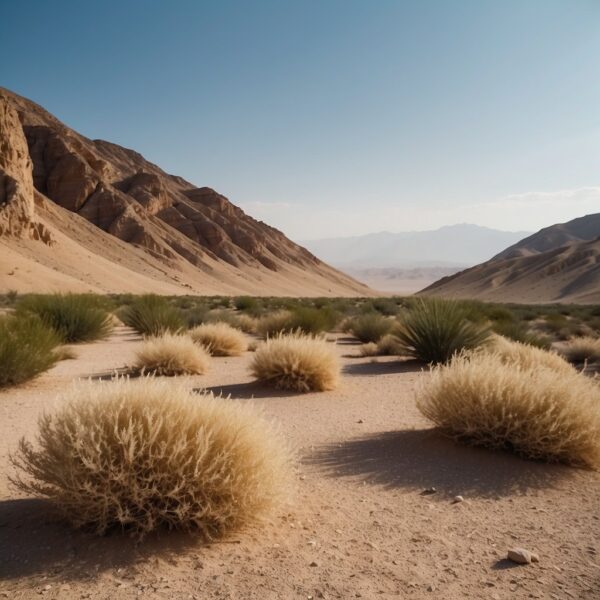
Habitats and Ecosystems
Iran’s diverse landscapes range from arid deserts to lush forests, offering a variety of ecosystems where wild cats thrive. The elevated terrains and dense woodlands of northern Iran contrast sharply with the central arid and semi-arid regions home to several cat species.
Species such as the Asiatic cheetah and the Persian leopard are adapted to rugged terrains, while the sand cat occupies the desert ecosystems, with its presence confirmed in central, east, and south-eastern regions of Iran. The habitats these cats occupy are as varied as the species themselves, ranging from mountainous regions to arid deserts, reflecting Iran’s ecological diversity. This diversity is due to Iran being at the intersection of three continents, creating unique environmental conditions favorable for different wild cats.
- In the Alborz and Zagros mountains, the Persian leopard roams where there is ample forest cover and prey.
- Desert habitats are critical for species like the sand cat, which is specifically adapted to such harsh conditions.
Each ecosystem provides critical services for the survival of these wild cats, such as prey availability, shelter, and breeding grounds. However, these habitats are under threat from activities such as habitat destruction and fragmentation. The conservation of these ecosystems is vital for the survival of wild cat species in Iran, as these areas are their natural sanctuaries.
Behavioral and Physical Characteristics
Species of wild cats in Iran display distinct physical and behavioral traits that have adapted to their environments. The Persian leopard, a big cat species found in Iran with fewer than 1000 mature individuals in the wild, exhibits greyish fur with distinguishable large black rosettes. Known for their strength and agility, they are solitary animals, often hunting at night and covering large territories to find prey.
The Asiatic cheetah, another Iranian big cat and critically endangered, is recognized for its incredible speed, streamlined body, and unique black “tear marks” that run from the corners of their eyes down the sides of the nose to their mouth. Prevalent in open landscapes, their behavior is characterized by incredible bursts of speed to catch fast-moving prey. Unfortunately, only a small number remain in Iran.
The Arabian leopard has a habitat spanning across the Arabian Peninsula, and like its peers, is critically endangered with less than 200 individuals in the wild. Elusive and nocturnal, this species has behavioral patterns similar to the Persian leopard, demonstrating territoriality and a need for large tracts of land to support their solitary lifestyle.
Smaller wild cats such as the Asiatic wildcat have a least concern conservation status, with physical features including a long tail with a black tip and a coat with colors ranging from sand yellow to grey yellow or red containing small black or red-brown spots.
- Persian Leopard (Panthera pardus tulliana)
- Habitat: Mostly mountainous regions
- Behavior: Solitary, nocturnal predator
- Conservation Status: Critically Endangered
- Asiatic Cheetah (Acinonyx jubatus venaticus)
- Habitat: Open landscapes
- Behavior: Daytime hunter, high-speed chases
- Conservation Status: Critically Endangered
- Arabian Leopard (Panthera pardus nimr)
- Habitat: Varied, preferably mountainous
- Behavior: Nocturnal, territorial
- Conservation Status: Critically Endangered
- Asiatic Wildcat
- Habitat: Steppes and deserts
- Behavior: Similar to domestic cats but more elusive
- Conservation Status: Least Concern
Cultural and Historical Significance
In Iran, wild cats have held a place of prominence that intertwines with both the cultural identity and historical narrative of the nation. Notably, the Persian leopard has been revered across a multitude of domains such as literature, art, and architecture. They are often depicted in Iranian poems and paintings, symbolizing power and grace. Within carpet weaving, leopards are frequently featured, showcasing their significance in traditional crafts.
The Asiatic lion and Caspian tiger, both of which historically roamed the lands of Iran, along with the Persian leopard, have been deeply respected in the Iranian culture. Evidence of their influence permeates through historical records and architectural motifs, reflecting their esteemed status in society.
These wild cats not only contribute to the country’s natural heritage but also serve as a vital link to Iran’s historical and cultural legacy. The ornate depictions in earthly artifacts and the reverence in written word stand testament to their enduring legacy.
Multiple organizations within Iran are committed to the conservation of these majestic creatures, understanding their role as not only ecological but also historical and cultural treasures. Efforts to protect them continue to honor their longstanding connection with Iran’s rich tapestry of human culture and the natural world.
Human Interactions and Domestication
The domestication of cats in areas such as Iran can be traced back to a mutually beneficial relationship between humans and wildcats. As Felis silvestris, the progenitor of the domestic cat, became attracted to rodent populations in developing agrarian societies in the Fertile Crescent, a symbiotic relationship was formed. Humans provided a steady supply of prey, and in return, wildcats controlled the rodent population, aiding in the protection of food stores.
The transition from hunter-gatherers to farmers around 12,000 years ago marked a significant evolutionary leap for both humans and felids. Bold wildcats that ventured close to human settlements were the likelier ancestors of today’s domestic cats. These cats adapted to human presence and began the journey from feral to friend.
In modern Iran, however, big cats such as the critically endangered Persian leopards (Panthera pardus tulliana) face multiple threats despite their revered status. Illegal hunting, habitat loss, and human conflict have drastically reduced their numbers. Conservation efforts are crucial for their survival, indicating a shift in human interaction from a past of coexistence with wildcats to one of protection and preservation.
Domestic cats in Iranian society have retained much of their ancestral independence while becoming a cherished companion in many homes. Human interaction with these small felines is multifaceted, encompassing roles such as pest control agents, beloved pets, and symbols of cultural heritage. As small cats thrived alongside humans, so too has the narrative of their coexistence evolved, displaying the depth of the human-feline bond in Iran’s history.
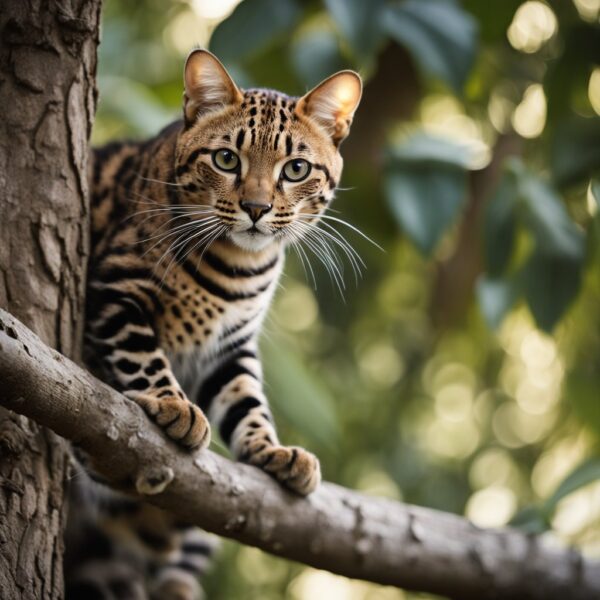
Frequently Asked Questions about cats in iran
This section addresses common queries about the diverse feline species that inhabit Iran, ranging from the smallest wild cats to the grandeur of big cats and their unique adaptations and habitats in this region.
What species of wild cats are native to Iran?
Iran is home to several species of wild cats, including the critically endangered Persian leopard (Panthera pardus tulliana), with fewer than 1,000 mature individuals in the wild. The Asiatic cheetah (Acinonyx jubatus venaticus), also known as the Persian or Iranian cheetah, is found only in Iran and is critically endangered as well.
What is the smallest wild cat species found in the Middle East?
The Arabian leopard (Panthera pardus nimr), although not the smallest, is a small-sized big cat native to the Middle East with less than 200 individuals remaining in the wild. For the smallest species such as the Sand Cat (Felis margarita), Iran is among the countries where this elusive small wild cat roams the deserts.
How does the Pallas’s cat adapt to its environment in Iran?
The Pallas’s cat (Otocolobus manul) has several adaptations for life in the cold and arid regions of Iran. They have long, dense fur for insulation against severe weather, a stocky build with short legs for stalking prey in grasslands and rocky areas, and wide-set ears that aid in hunting small prey on the ground.
What are the characteristics of the Persian lion’s habitat?
While the Persian lion (Panthera leo persica) is extinct in the wild in Iran, historically, its habitat would have consisted of open plains, savannah-like grasslands, and scrub forest areas where they could find sufficient prey.
How does the size of small wild cats in Iran compare to that of an ocelot?
Small wild cats in Iran, such as the Sand Cat, have a body size significantly smaller than that of an ocelot. An ocelot typically measures around 70 to 90 centimeters in length, not including the tail, whereas the Sand Cat averages about 45 to 57 centimeters in body length.
Are there any big cats indigenous to the regions surrounding Iran?
Regions adjacent to Iran, such as the Arabian Peninsula, harbor the Arabian leopard (Panthera pardus nimr), which is also critically endangered. Furthermore, the South Caucasus, bordering northern Iran, historically supported big cats like the Caucasian leopard.